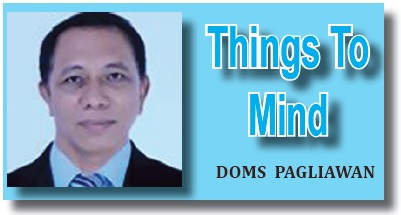Fighting alongside American forces against the Japanese in the Pacific during World War II were Filipinos who fought with courage, gallantry, and heroism, and were thus promised all the benefits afforded to US servicemen. Despite their supposed huge number of 200,000, there were several pockets of independent guerilla resistance against the enemies in remote villages that were not recorded in history, nor recognized by the US army for their limited memberships. Mostly, they came from rural folks who were brutalized by the Japanese Imperial Army, and were driven with personal hatred and vengeance. They carried out raids against enemy targets that, for sure, had contributed to the downfall of Japan in the country.
Of late, tales of their resistance are just confined to family histories that grandparents had handed down to their grandchildren. But they are at risk of disappearing into oblivion. Cognizant of these historical realities, and of the need to record them, I am venturing into such documentation albeit fictitiously, hoping to bare the unheard of, to shed light on silent facets of history. It is through a novel-in-progress titled, Magsighot nga Dalan, a partly historical Waray novel (my would-be second novel in Waray), covering the eve of Japanese invasion and subsequent occupation of the Philippines, to the first three decades thereafter.
The story is told from the point of view of three individuals whose lives cross paths to reveal diverging, and at times, conflicting pursuits in the culturally and morally diverse Philippine society. Partially set against wartime and its aftermath in the rural villages of Samar, some of the novel’s details include barbaric acts and gory incidents, which are intentionally included to justify a purpose. The characters hopefully provide louder voices as well as clearer figures to some representative sectors that are sadly ignored due to certain biases of mainstream society. The plot is rather meant for mature audiences as the conflict in it suggests so, violence being something that can’t be helped per nature of the story line.
To achieve peace, we need to rid society of war; it being a killer, a destroyer. This is what the novel tries its best to underscore by painting a vivid picture of the horrors and sufferings that war brings. It invites attention to the fact that war gives nothing but agony and doom to those who engage in it. The brutality and savagery associated with it are too much for the mind to bear they could even cause insanity, lowering human dignity to the level of beasts in the wild, inflicting unbearable pains, and causing lives to cease before their time. As one scans the pages of this novel, one is likely to develop, after seeing the evils of war, extreme resentment for it, or at least a questioning attitude of its wisdom, which are both necessary in doing away with this most devastating human activity.
This novel further attests to the fact that violence breeds its kind. In the event of war, the aggressors might be able to subdue their victims, but down deep in the latter’s hearts, they are just waiting for a chance to strike back, to get even, and this vengeful indignation could be far ruthless. And so, the cycle of violence intensifies. Here’s the wisdom: if you sow war, you will reap it. Call it didacticism, but that’s exactly what Japan did, and learned from. This process of learning something the hard way, the painful way, is strongly suggested by this work so that, through it, those who love war will choose peace, instead. When Japan plunged itself to the prospects of war, it precisely failed to consider its consequences. This novel details those consequences to drive home the point that war is deceptively disastrous.
(To be continued)




